Donald Ross, a giant of the Golden Age of golf architecture, was stunningly prolific, with over 400 designs to his name. Ross was one of the first professional golf course architects to build a successful and efficient business in America. His name appears more than any other on the magazines’ top-100 rankings, and over 100 major championships and USGA events have been hosted at his courses. Ross’s transcendent skills were his genius for routing courses and his ability to create playability for beginners while still challenging the best players.
Background
Donald Ross was born in 1872, in the town of Dornoch, Scotland. He got his start in golf by caddying at one of the finest courses in the world, Royal Dornoch, and he later became a club-maker. He met Old Tom Morris in Dornoch and ended up serving as an apprentice for him in St. Andrews. Ross was soon named the golf professional at his home course.
In 1899, Ross took his talents to the United States. Upon arriving, he took a job as the professional at Oakley Country Club in Massachusetts. The course was somewhat mediocre when he arrived. Ross changed that in short order. His first golf course design would be the new course at Oakley CC, which opened in 1901. If you visit Oakley today, you will find 11 original Donald Ross holes.
Soon after arriving in the states, Ross picked up a winter job at James Tufts’s Pinehurst Resort in North Carolina. With the rising popularity of golf and resort life in general, Pinehurst expanded quickly, and Ross did much more than your typical pro. He was immediately tasked with building a new nine-hole loop to supplement the resort’s existing 18 holes (Pinehurst No. 1). To this day, Pinehurst’s crown jewel remains Ross’s No. 2 course, which opened in its first iteration in 1907. Overall, he had a major hand in the upgrades that turned Pinehurst into one of the premier resorts in America.
During the same time, Ross built a formidable reputation as a player. He claimed the Massachusetts Open in 1905 and 1911, and won the prestigious North and South Open three times (1903, 1905, 1911). At the U.S. Open, he finished in the top 10 four times and placed fifth in 1903.
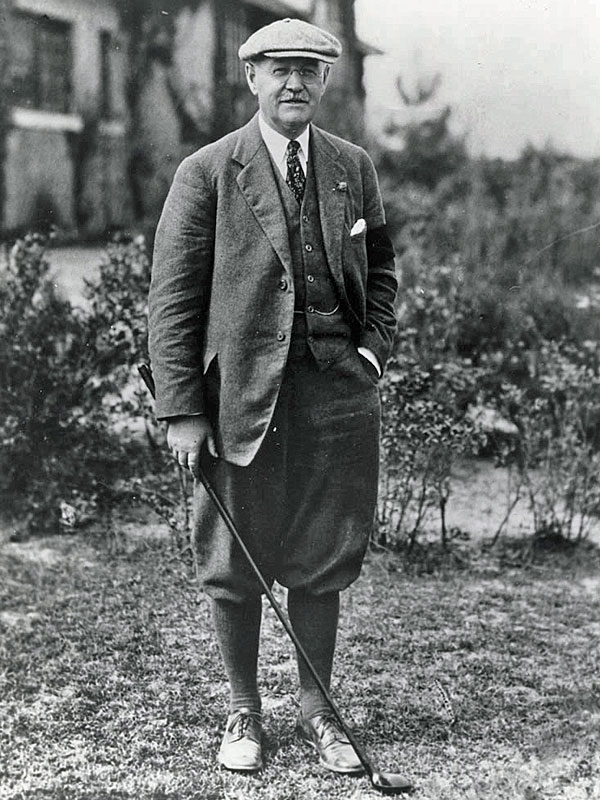
As he aged, Ross focused less on playing and more on architecture. He is credited with designs or redesigns at over 400 courses in the United States. Because of this heavy workload, the architect was able to visit only about half of his sites and tended to rely on land surveys. By the 1920s, Ross had a two- to three-year backlog of projects. When the Great Depression hit, however, his business, like everyone else’s, slowed to a trickle. If the Depression had not occurred, his course count may have been closer to 700.
Donald Ross passed away in the spring of 1948 while working on his final design, Raleigh Country Club.
A current architect’s perspective
I think Ross realized he was introducing a new populace to the game of golf and felt a responsibility to use his work to teach the game in a balanced manner and examine a player’s ability to hit a broad spectrum of shots. He used bunkers to direct a player to the proper line of play and/or suggest a shape of shot. Ross didn’t force the player around the course, he gave them multiple options and let them choose. Many times the shortest route was fraught with danger while the longer route was more visible and comfortable. The approach from each would present a different requirement and difficulty. There are certainly cases, such as the “Volcano” par 3s, where he required one dominant shot type to reach the green—an aerial approach in this case.
Ross’s work is so unique because he routed and designed from what he was given at each and every piece of property. His courses and holes seldom look alike due to the way he connected each and every hole to that piece of property. I’ve often said Ross designed his holes by visualizing golf shots and knowing how the ball would react once on the ground. He placed bunkers and angled his greens and edges to interact with what he perceived the ball movement, drainage, and other factors to be. His ability and willingness to route holes and place greens over, through, and across a variety of what would be considered severe topographic features to a modern-day architect was very impressive, especially considering the equipment at his disposal.
–Kris Spence, golf course architect and Donald Ross restoration expert
-
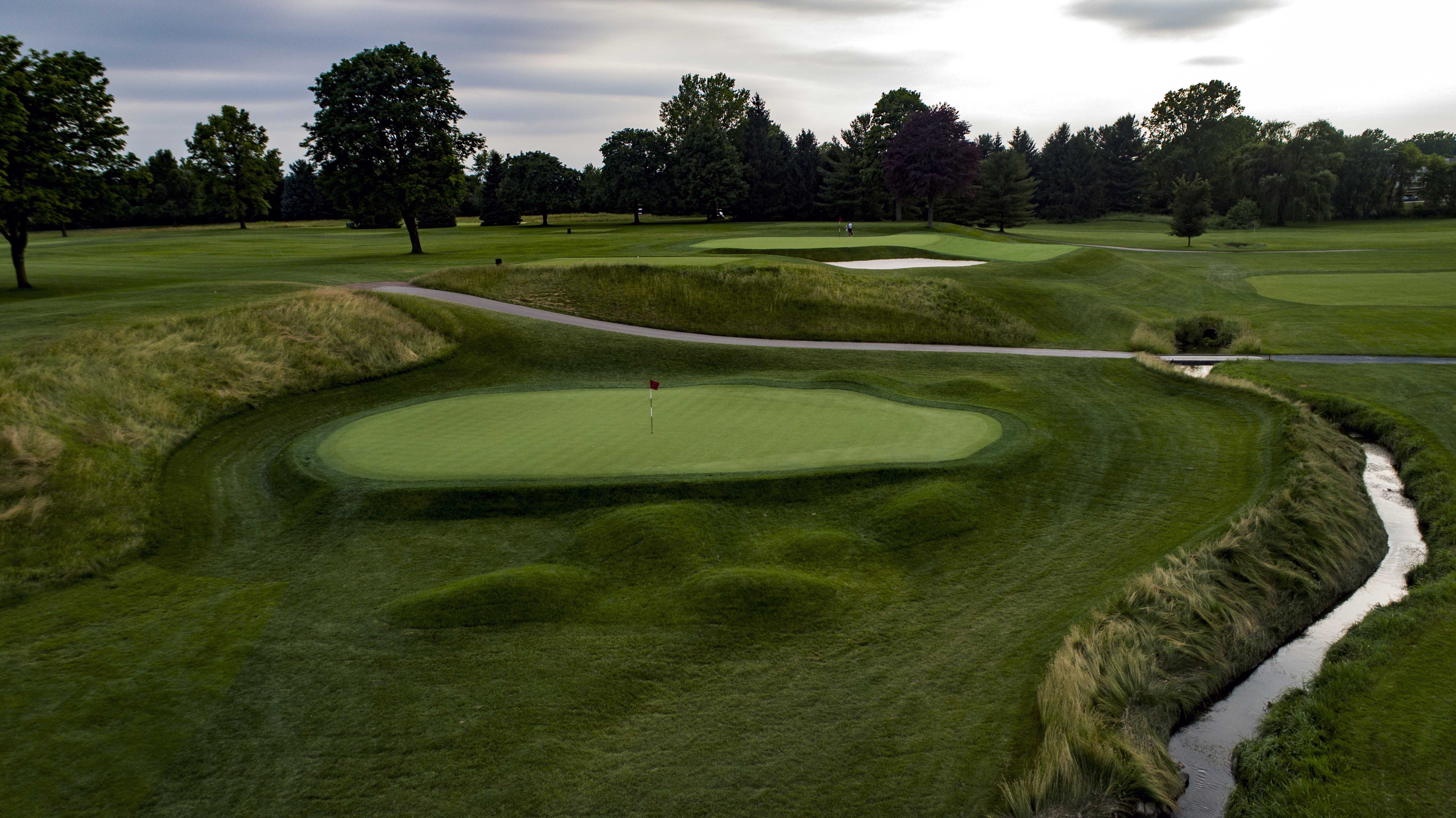
The 10th (lower) and 1st (upper) greens at Inverness Club
-
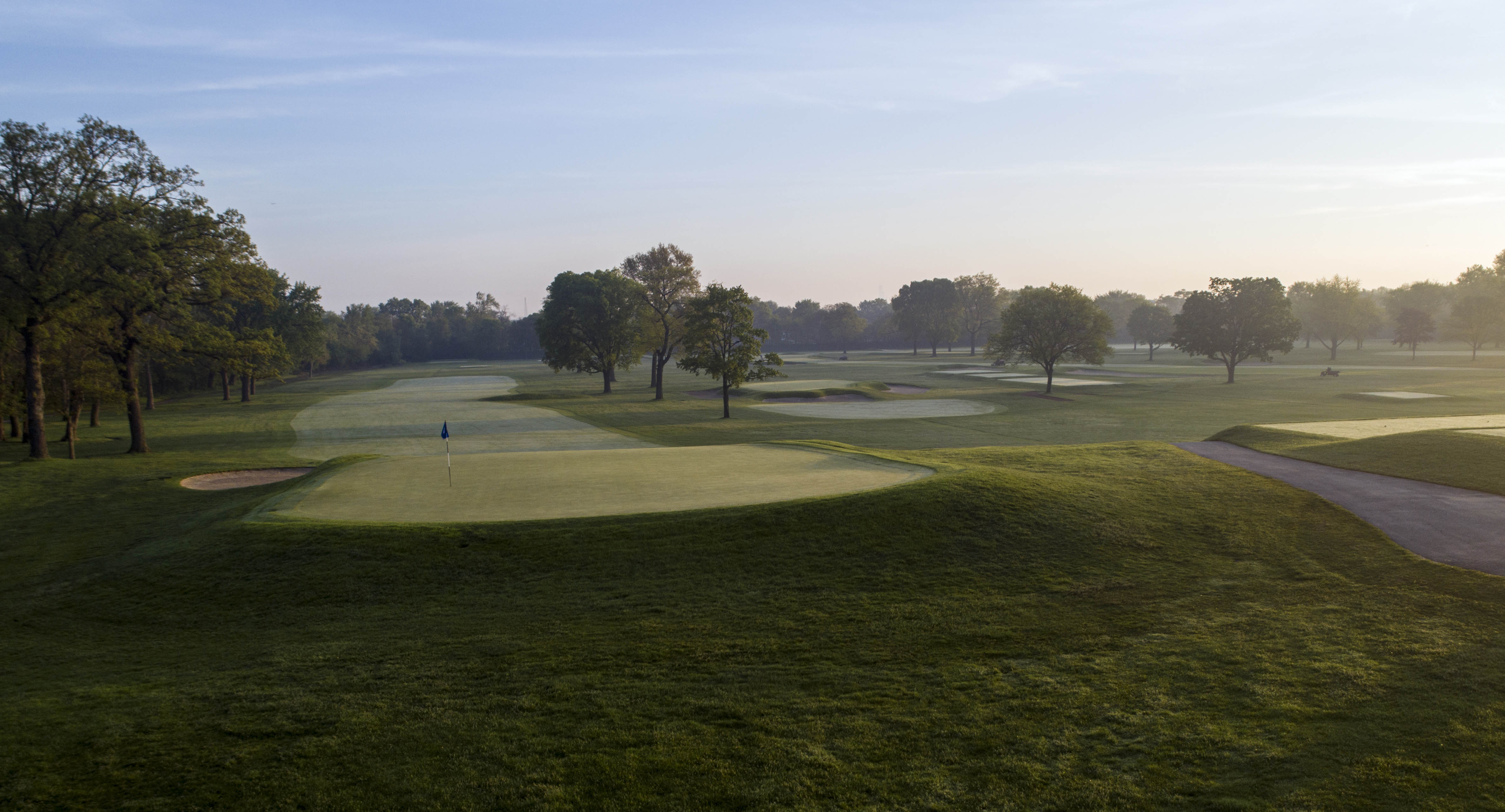
The 5th and 6th holes at the Beverly Country Club
-
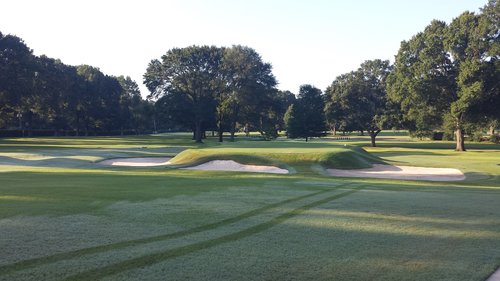
The Volcano Hole at Memphis Country Club
Design principles
Donald Ross had a wide array of strengths as an architect. He consistently created memorable courses without the use of gimmicks. He built holes that are playable for all but present unique challenges for the skilled player. His designs test one’s ability to hit many different shots with all different clubs. Still, since Ross was devoted to fitting his courses to their individual properties, it can be hard to detect similarities across his body of work. That said, there are a few specific hallmarks of his designs:
Switchbacks
A switchback hole is a par 4 or 5 that promotes opposing shot shapes on the tee shot and the approach. Think of the 13th hole at Augusta National: a right-to-left drive is strongly preferred, and a left-to-right approach (if you can execute it off the sidehill lie) works best. Donald Ross’s courses, too, give an advantage to players who can work the ball both ways, and they frequently do so with switchbacks. Ross must have liked how this hole design examines the versatility of a low-handicapper’s game but doesn’t severely punish the lesser player. Read here about one of Ross’s best switchback holes, the 8th at Pinehurst No. 2.
Diagonal hazards
When cross hazards appear on Ross’s courses—whether creeks or bunker complexes—they are often oriented diagonally to the line of play. This allows players to choose shorter or longer carries, depending on how much they want to risk in order to gain an angle or proximity advantage on their next shot.
Creative greens
Ross’s brilliance really shines on and around his greens. While the architect is often associated with “turtleback” greens that repel slightly errant shots, he actually employed that style at only a few of his designs, most famously at Pinehurst No. 2. He should be known more for the sheer variety of greens he built site to site and course to course. Whether double plateaus, punchbowls, volcanos, or—yes—turtlebacks, Ross’s greens show his knack for dreaming up challenging, instantly memorable greens and surrounds.
-
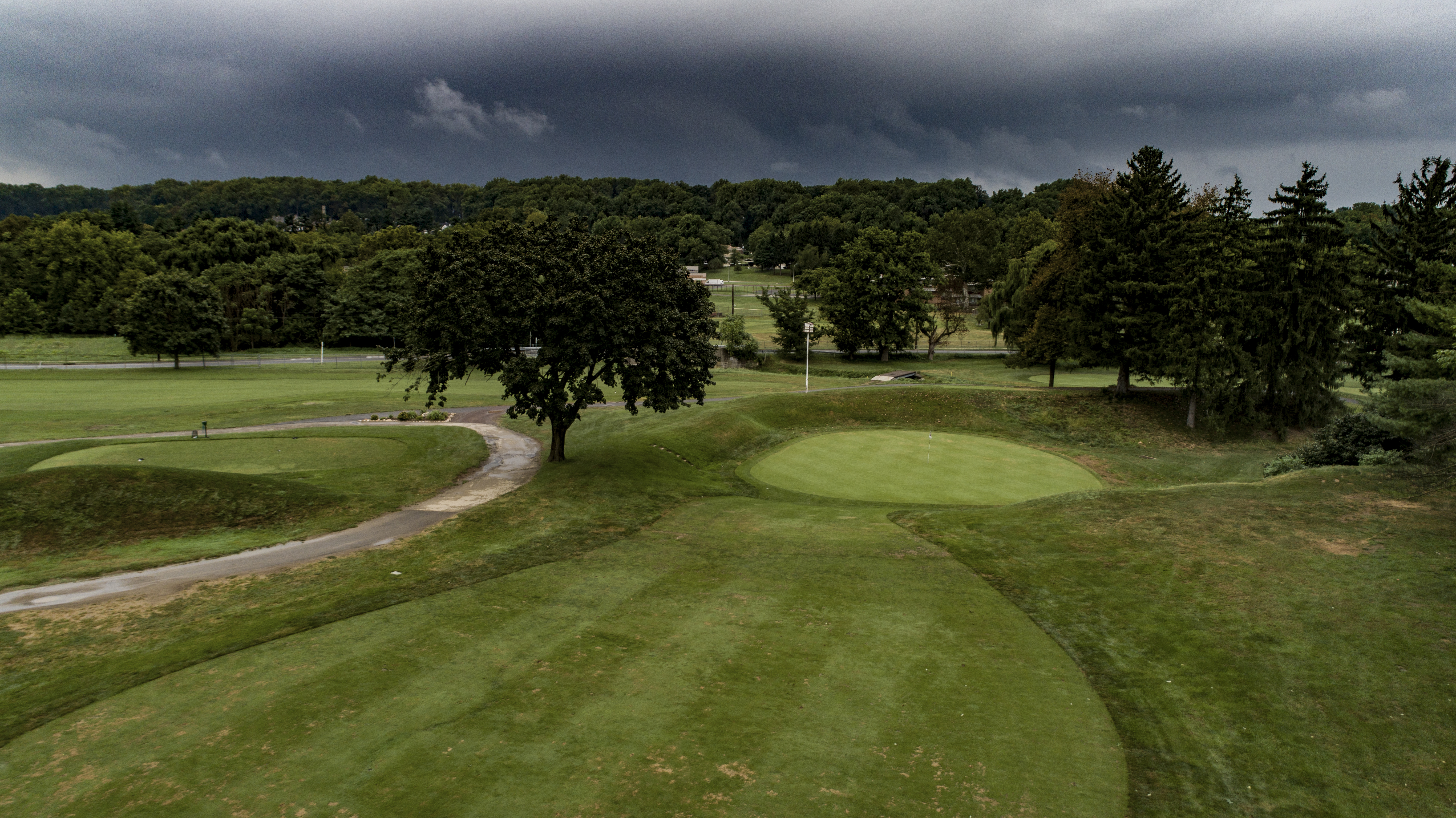
The punchbowl at Lulu Country Club
-
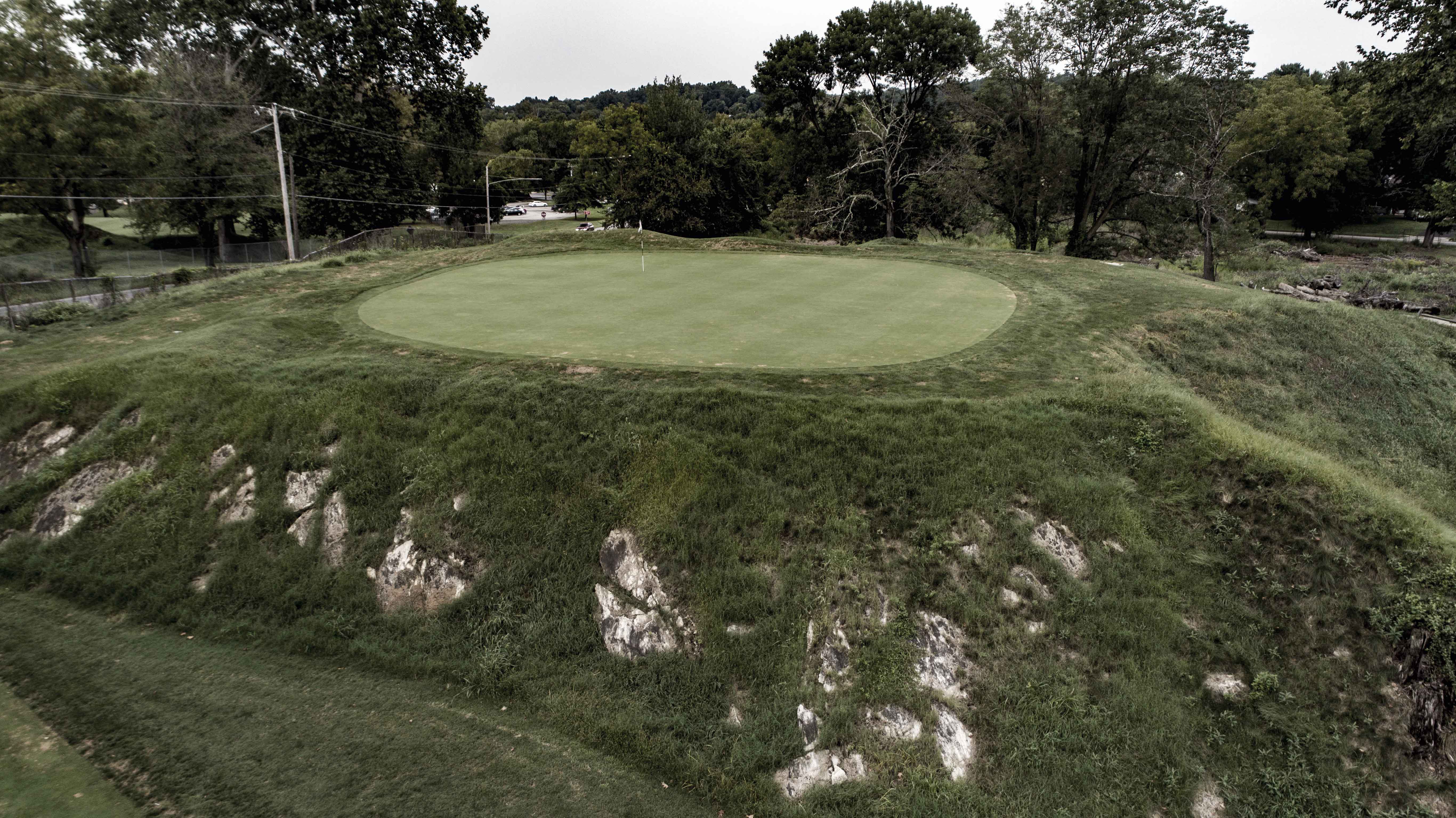
The Volcano at Lulu Country Club
-
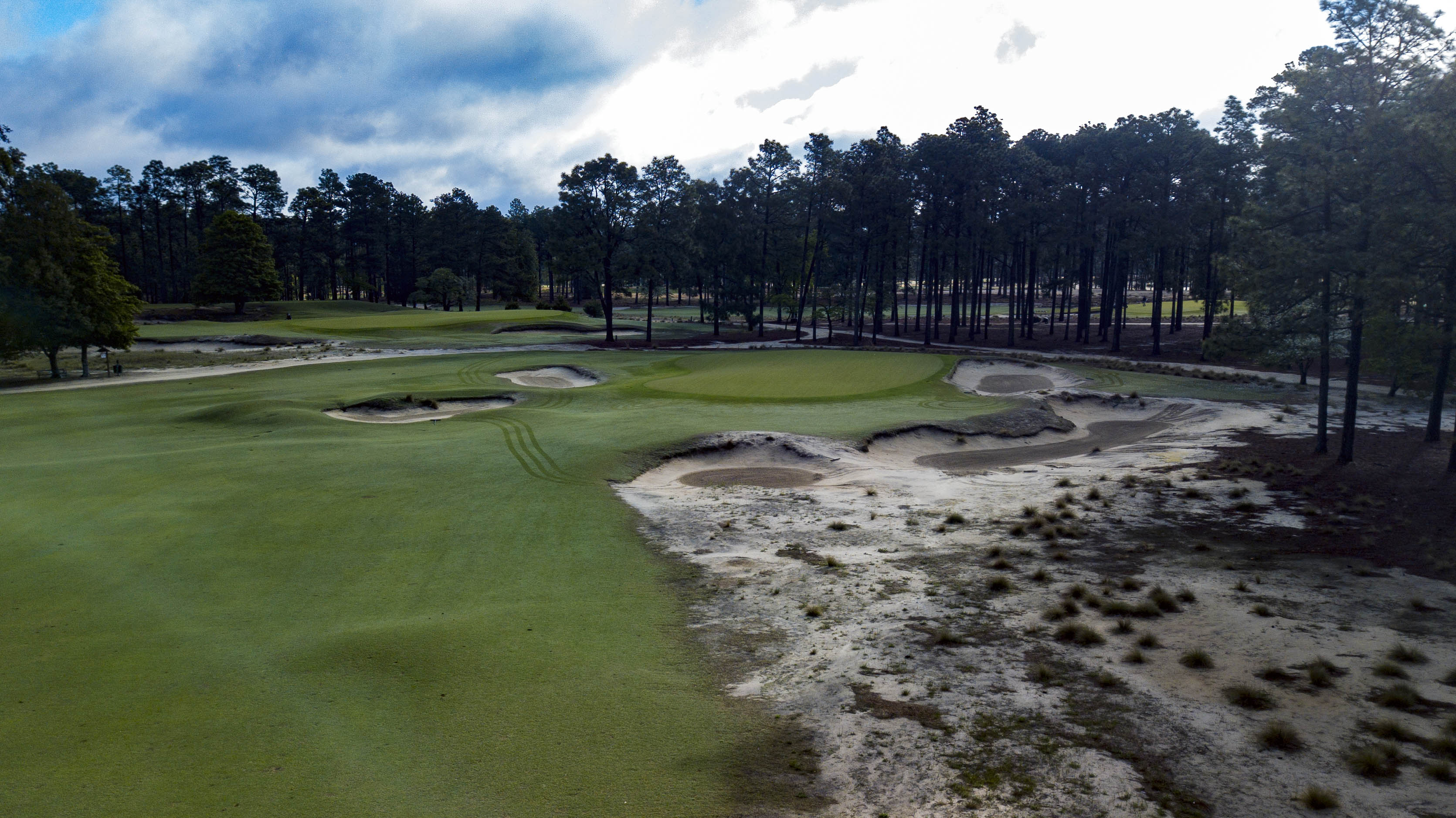
Ross's greens at Pinehurst No. 2 receive only the best approaches
-
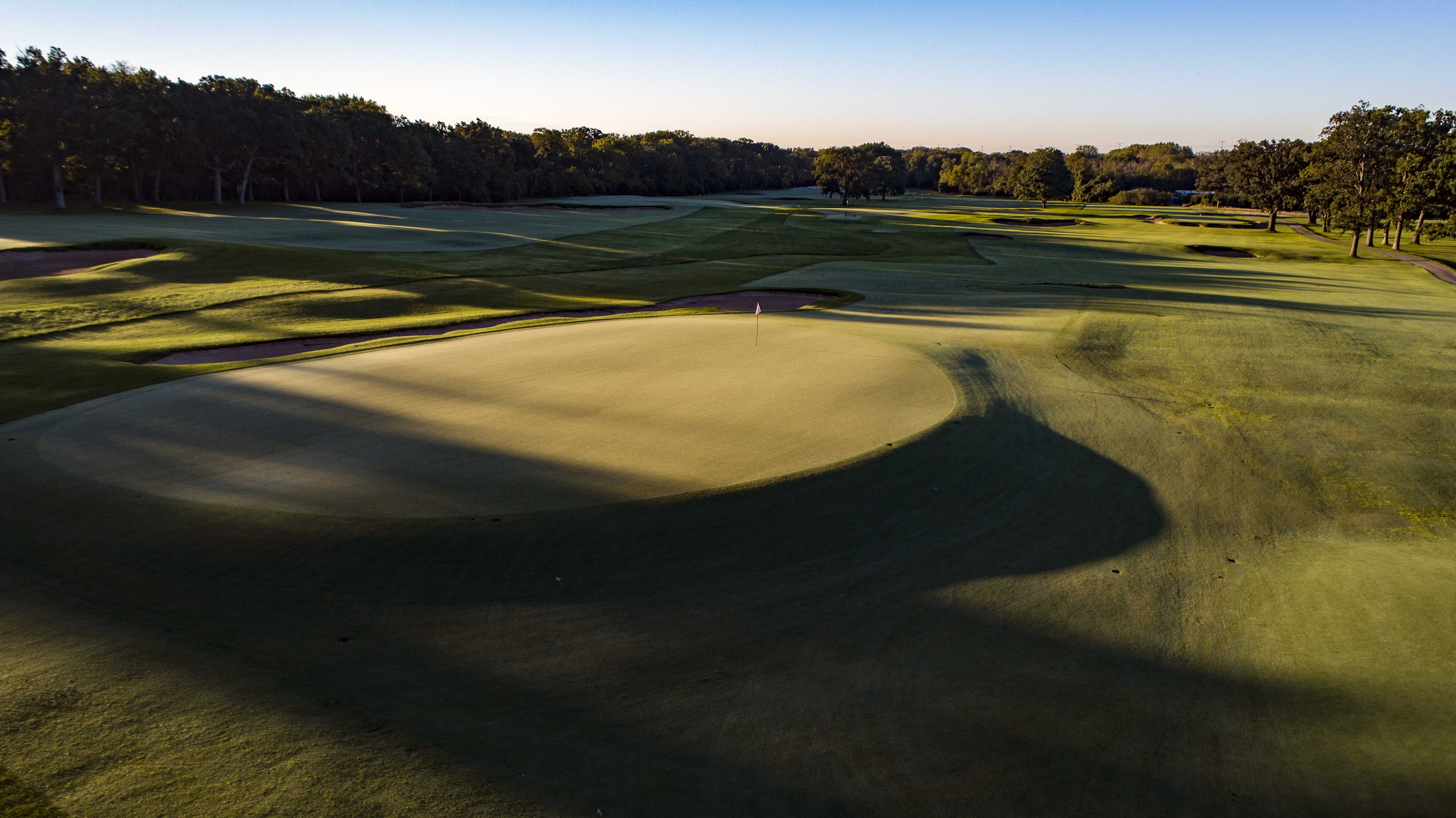
At Old Elm Club, Ross teamed up with Harry Colt to build turtleback greens reminiscent of those at Pinehurst No. 2
More Donald Ross-related content
- Routing the Ridges: The Architecture of Seminole Golf Club
- The Sink at the Mink: How a Distinctive Property and a Donald Ross Routing Create Variety at Aronimink Golf Club
Notable courses
Pinehurst No. 2 (NC), Seminole Golf Club (FL), Oakland Hills Country Club (MI), Oak Hill Country Club (NY), Inverness Club (OH), East Lake Golf Club (GA), Beverly Country Club (IL), Holston Hills Country Club (TN), Essex County Club (MA), Carolina Golf and Country Club (NC), Sedgefield Country Club (NC), Mid Pines Inn and Golf Club (NC), Pine Needles Lodge and Golf Club (NC), Scioto Country Club (OH), Aronimink Golf Club (PA), Gulph Mills Country Club (PA), Wannamoisett Country Club (RI), Exmoor Country Club (IL), Old Elm Club (IL), Augusta Country Club (GA), Brookside Country Club (OH), Franklin Hills Country Club (MI), White Bear Yacht Club (MN), Interlachen Country Club (MN), Whippoorwill Country Club (MA), Monroe Golf Club (NY), Roaring Gap Club (NC)
Courses open to the public
Pinehurst Resort (NC), Asheville Municipal Golf Course (NC), The Donald Ross Course at French Lick (IN), The Broadmoor Golf Club (East) (CO), Ravisloe Country Club (IL), Forest Hills Golf Club (GA), The Balsams Resort (Panorama) (NH), Buck Hill Golf Club (PA), Fort Myers Country Club (FL), Mid Pines Inn and Golf Club (NC), Pine Needles Lodge and Golf Club (NC), Lulu Country Club (PA), Jeffersonville Golf Course (PA), Manakiki Golf Course (OH)


 by
by 
